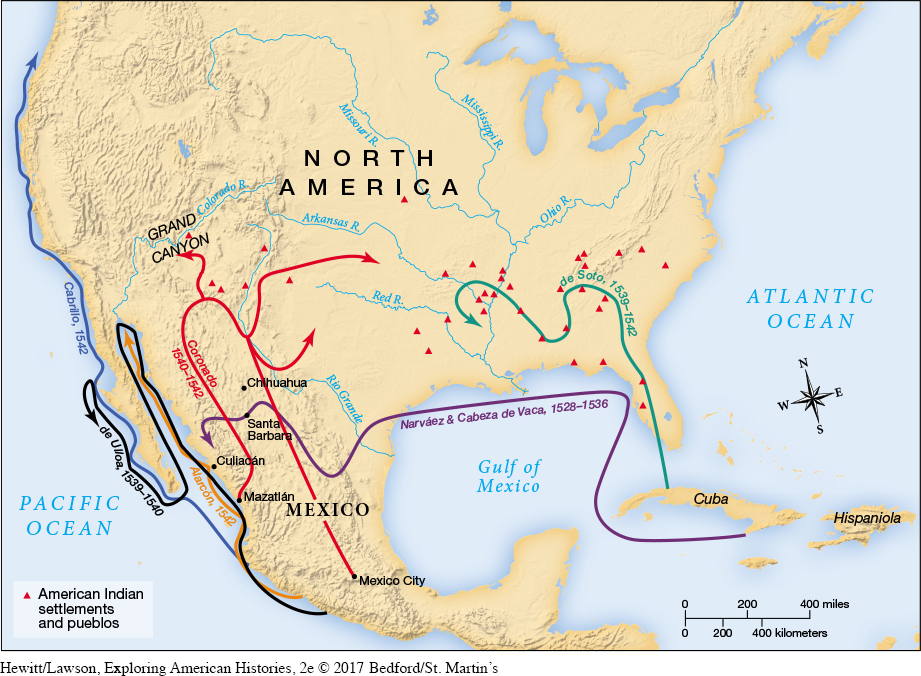Spanish Adventurers Head North
In 1526, a company of Spanish women and men traveled from the West Indies as far north as the Santee River in present-day South Carolina. They planned to settle in the region and then search for gold and other valuables. The effort failed, but two years later Pánfilo de Narváez—one of the survivors—led four hundred soldiers from Cuba to Florida’s Tampa Bay. Seeking precious metals, the party instead confronted hunger, disease, and hostile Indians. The ragtag group continued to journey along the Gulf coast, until only four men, led by Álvar Núñez Cabeza de Vaca, made their way from Galveston Bay back to Mexico City.
A decade later, in 1539, a survivor of Narváez’s ill-fated venture—a North African named Esteban—led a party of Spaniards from Mexico back north. Lured by tales of Seven Golden Cities, the party instead encountered Zuñi Indians, who attacked the Spaniards and killed Esteban. Still, the men who returned to Mexico passed on stories of large and wealthy cities. Hoping to find fame and fortune, Francisco Vásquez de Coronado launched a grand expedition northward in 1540. Angered when they failed to discover fabulous wealth, Coronado and his men terrorized the region, burning towns, killing residents, and stealing goods before returning to Mexico.
Hernando de Soto headed a fourth effort to find wealth in North America. An experienced conquistador, de Soto received royal authority in 1539 to explore Florida. That spring he established a village near Tampa Bay with more than six hundred Spanish, Indian, and African men, and a few women. A few months later, de Soto and the bulk of his company traveled up the west Florida coast with Juan Ortiz, a member of the Narváez expedition and an especially useful guide and interpreter. That winter, the expedition traveled into present-day Georgia and the Carolinas in an unsuccessful search for riches (Map 1.6).

On their return trip, de Soto’s men engaged in a brutal battle with local Indians led by Chief Tuskaloosa. Although the Spaniards claimed victory, they lost a significant number of men and horses and most of their equipment. Fearing that word of the disaster would reach Spain, de Soto steered his men away from supply ships in the Gulf of Mexico and headed back north. The group continued through parts of present-day Tennessee, Arkansas, Oklahoma, and Texas, and in May 1541 they became the first Europeans to report seeing the vast Mississippi River. By the winter of 1542, the expedition had lost more men and supplies to Indians, and de Soto had died. The remaining members finally returned to Spanish territory in the summer of 1543.
The lengthy journey of de Soto and his men brought European diseases into new areas, leading to epidemics and the depopulation of once-substantial native communities. At the same time, the Spaniards left horses and pigs behind, creating new sources of transportation and food for native peoples. Although most Spaniards considered de Soto’s journey a failure, the Spanish crown claimed vast new territories. Two decades later, in 1565, Pedro Menéndez de Avilés established a mission settlement on the northeast coast of Florida, named St. Augustine. It became the first permanent European settlement in North America.
Exploring American HistoriesPrinted Page 26
Exploring American Histories Value EditionPrinted Page 20
Chapter Timeline